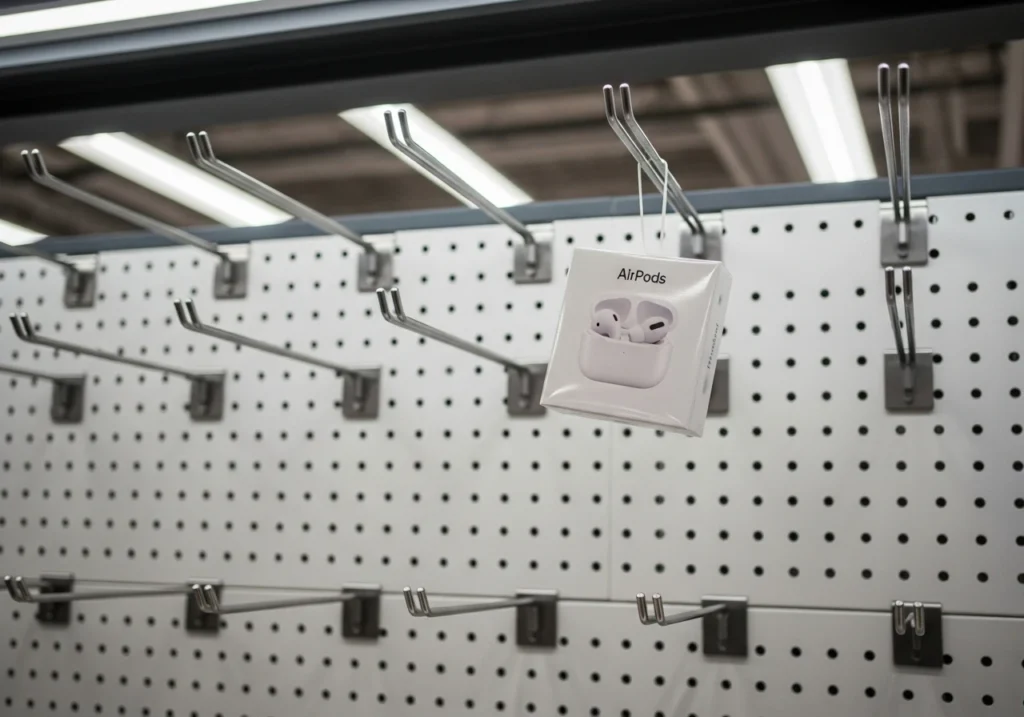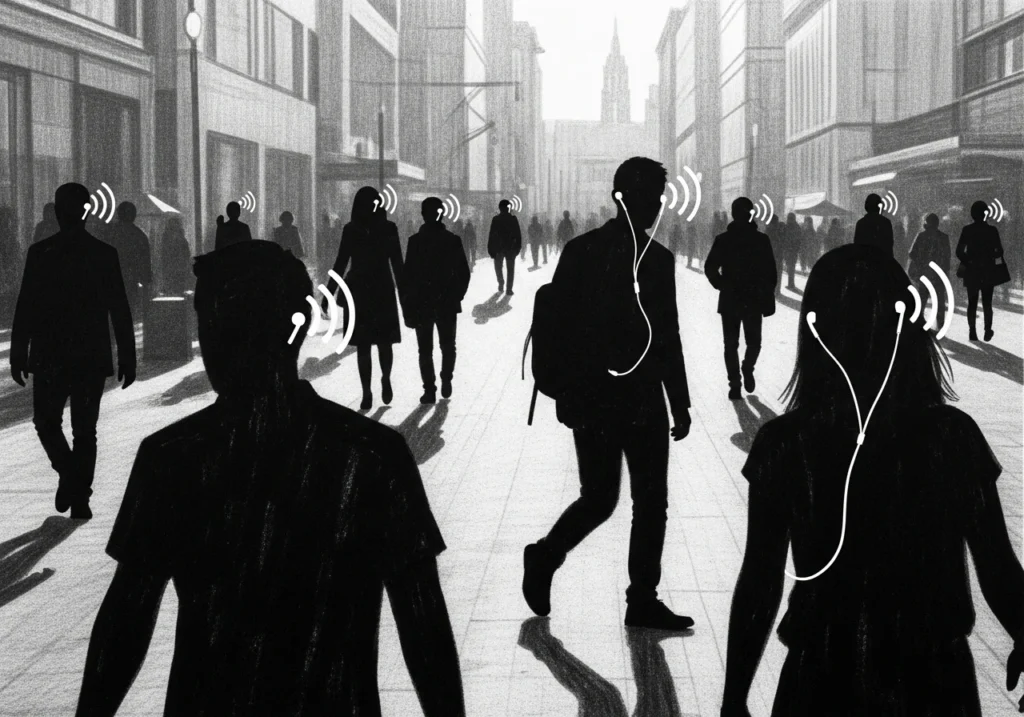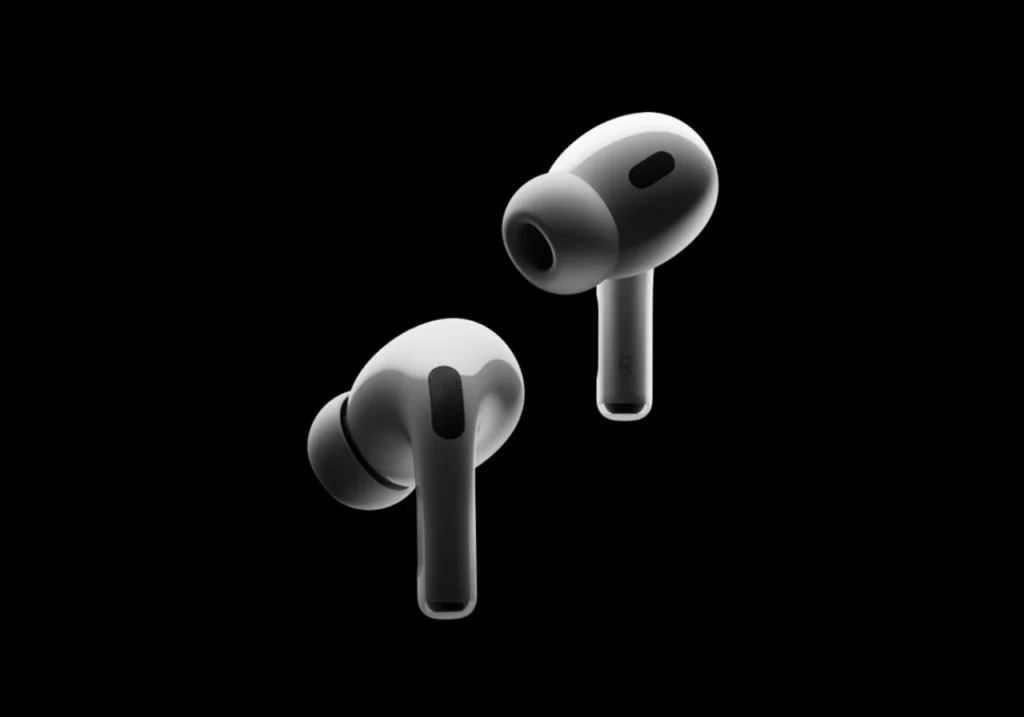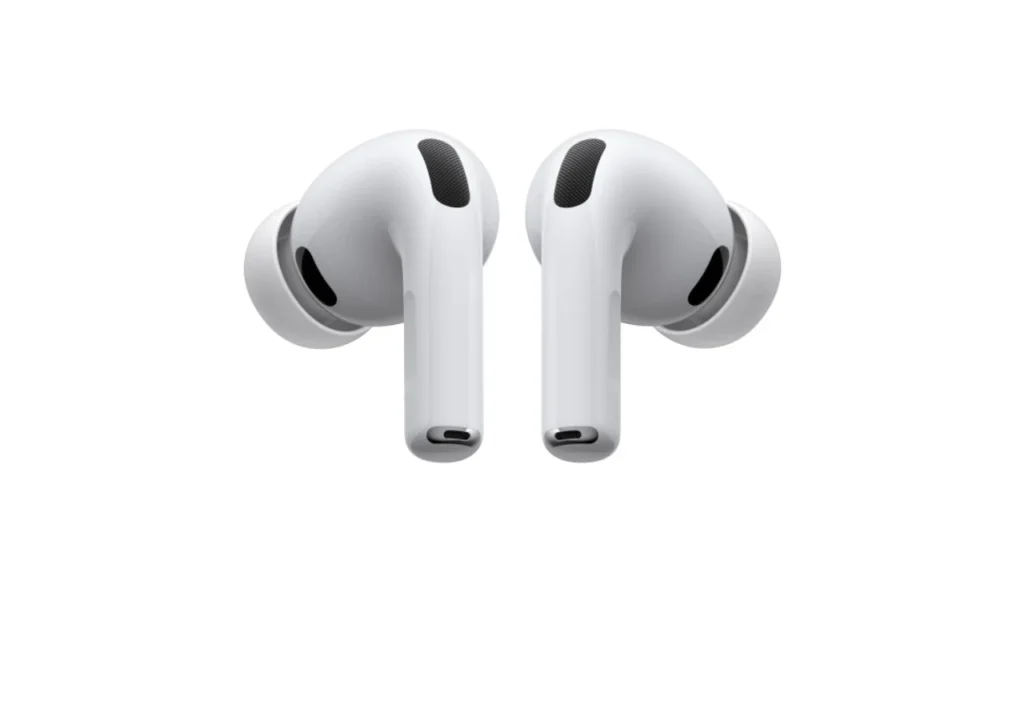Table of Contents
Introduction
The AirPods weren’t just a product launch; they were a quiet cultural coup. In 2016, Apple unleashed a device that seemed, on the surface, to be a simple pair of wireless earbuds. Yet, what followed was a masterclass in social engineering. These tiny white stems didn’t just change how we listen to music; they subtly reprogrammed public etiquette, redesigned status signaling, and became an icon of the modern age. To understand their phenomenal success, we must look beyond the technical specifications and into the hidden currents of design, culture, and marketing that paved their way. The story of the AirPods is not about sound quality—it’s about how an object can alter human behavior.
How did a gadget, initially mocked for its unorthodox design, become an indispensable accessory and a global status symbol? The answer is not a single innovation but a convergence of calculated risks and historical precedents. The flawed AirPods were a social gamble that paid off spectacularly, normalizing a state of public solitude and blurring the lines between the digital and physical worlds. Their rise reveals a deeper truth about modern consumerism: the most powerful products are not just tools, but extensions of our identity. This article dissects the anatomy of this phenomenon, uncovering the surprising origins of the AirPods’ dominance.
To truly understand their impact, we will journey through five forgotten histories. We’ll begin by tracing their conceptual blueprint back to 20th-century science fiction and the clunky early days of wearable tech. From there, we will explore how the AirPods deliberately reprogrammed social etiquette, turning isolation into a fashion statement. We’ll deconstruct the silent signals that turned them into a powerful status symbol and reveal the brilliant retail strategy that reshaped the entire electronics market. Finally, we will confront the unintended consequences of their success, from their environmental toll to the future of personal audio, rethinking the legacy of these iconic white earbuds.

The Forgotten Blueprint: How 20th-Century Sci-Fi and Early Wearables Paved the Way for AirPods
Long before the first pair of AirPods were unboxed, the concept of a discreet, personal audio device was already lodged in our cultural imagination. In his 1953 novel Fahrenheit 451, Ray Bradbury described “Seashells,” tiny “thimble radios” that whispered a constant stream of news, music, and entertainment directly into the user’s ear. This wasn’t just a gadget; it was a prophecy of a future where technology seamlessly merges with our senses, creating an intimate and unbroken audio reality. The vision for a device like the AirPods existed as a dream of immersive, invisible technology decades before the engineering could catch up, planting the seed for a world where we could be alone in a crowd.
The journey from science fiction to a tangible product was awkward and slow. The early days of Bluetooth technology in the 2000s gave rise to the first wireless earpieces from brands like Jabra and Plantronics. However, these devices were clumsy, plagued by short battery life, and marred by blinking blue lights that screamed “tech accessory.” Their designs were purely functional, often associated with the aesthetic of a busy sales professional rather than a casual music listener. These early attempts failed to capture the public’s imagination because they were tools, not lifestyle objects. They solved a problem but lacked the elegance and cultural cachet necessary to become iconic, a misstep that left the door wide open for rethinking the AirPods’ potential.
The final piece of the puzzle came from Apple’s own history. The original wired iPod earbuds, with their stark white cables, became an unmistakable status symbol of the early 2000s. They were a uniform for the digital generation, a visible signal that you were part of the music revolution. This brilliant piece of branding created a powerful visual precedent. Apple understood that the look of their headphones was just as important as the sound. When the company finally cut the cord, the design lineage was clear. The AirPods weren’t just a new product; they were the next logical evolution of a visual identity that Apple had spent over a decade cultivating.

Reprogramming Etiquette: The Social Gamble of Making Public Solitude Acceptable
When AirPods first launched, their design was widely mocked and met with social apprehension. Critics didn’t just focus on the risk of losing them; they pointed to a deeper social flaw. The discreet, stem-like design was seen as a step too far into technological isolation. Many feared that the flawed AirPods would create a world of unapproachable people, seemingly engaged in conversation with no one. The design was a gamble that threatened to dismantle established social cues. Removing a large, visible headphone was a clear sign of engagement, but discreetly tapping a tiny white bud was ambiguous. This initial criticism highlighted a genuine fear: that the AirPods would make us ruder and more disconnected.
Before 2016, headphone etiquette was relatively straightforward. Large over-ear headphones or visible white cables sent a clear message: “I am in my own world.” Their presence was a deliberate, often respected, social barrier. The arrival of the AirPods shattered this clarity. Their subtlety made it difficult to know if someone was listening to music, on a call, or simply wearing a dormant accessory. This ambiguity is precisely what allowed them to normalize constant audio immersion. Soon, it became common to see AirPods worn in offices, during conversations, and at cash registers, blurring the lines between public engagement and private solitude in a way no previous device had managed.
Apple’s marketing brilliantly sidestepped the issue of social isolation by positioning the AirPods not as headphones, but as conduits to a seamless, futuristic lifestyle. Advertisements rarely showed people lost in music; instead, they depicted users effortlessly summoning Siri, taking calls on the move, and navigating the world with an invisible assistant. The message was one of empowerment and efficiency, not escapism. By framing the AirPods as a tool for hyper-connectivity rather than disconnection, Apple masterfully reprogrammed social norms. They didn’t just sell a product; they sold a new, socially acceptable way to be alone in public.

The Silent Status Signal: Engineering an Icon Beyond Audio Quality
The genius of the AirPods design lies in its unapologetic visibility. While competitors aimed for subtlety, Apple leaned into a design language that was impossible to ignore. The stark white color, a direct descendant of the iPod era, ensured they stood out against any skin tone or hair color. Furthermore, the stem—initially a point of ridicule—became the product’s most powerful branding tool. It made the AirPods instantly recognizable from a distance, transforming a simple earbud into a piece of wearable tech. This wasn’t just a design choice; it was the engineering of a silent status signal, crafted for a visual and social media-driven world.
This visual identity was amplified by a classic luxury marketing strategy: a high price point combined with initial scarcity. At $159, the AirPods were significantly more expensive than most wired earbuds, immediately positioning them as a premium product. When they first launched, they were notoriously hard to find, with demand far outstripping supply. This scarcity, whether intentional or not, fueled immense hype and transformed the AirPods from a mere accessory into a coveted status symbol. Owning them signaled that you were an early adopter with disposable income, a powerful message, particularly among younger, tech-savvy demographics who were quick to embrace them as a cultural flex.
The ultimate proof of their iconic status was their seamless integration into the world of fashion. The consequences of the AirPods rippled far beyond the tech sphere as they began appearing on celebrity influencers and fashion runways. They became a deliberate style choice, an accessory worn with the same intentionality as a watch or a handbag. This cultural shift spawned a massive secondary market for luxury cases from high-fashion brands and independent designers, allowing for another layer of personalization and status signaling. The AirPods had completed the journey from a mocked gadget to a genuine fashion icon, cementing their place as a triumph of design and cultural engineering.

Beyond the Music: How AirPods Reshaped Retail and Listening Habits
The rise of the AirPods was no happy accident; it was a calculated move in a brilliant retail strategy. By controversially removing the headphone jack from the iPhone 7, Apple created a problem that it was uniquely positioned to solve. Suddenly, millions of users were faced with a choice: fumble with a clumsy dongle adapter or embrace the wireless future. The AirPods were presented as the elegant, inevitable solution. This bold decision didn’t just create a new product category; it engineered an entire ecosystem, effectively forcing the market’s hand and pushing consumers directly toward Apple’s own high-margin wireless earbuds.
Beyond this strategic ecosystem play, the AirPods fundamentally redefined user expectations for consumer electronics. The pairing process was a moment of pure magic. Instead of navigating confusing Bluetooth menus, users simply opened the case, and their AirPods were instantly connected. This effortless experience, powered by the W1 chip, extended to the ingenious charging case, which solved the critical issue of battery anxiety for small wireless devices. This seamless integration set a new gold standard for the entire industry. Competing products were no longer just judged on sound quality, but on the simplicity of their setup and use, a design philosophy that rippled out to influence countless other gadgets.
Ultimately, the most profound impact of the AirPods was on our listening habits. They transformed audio from an intentional activity into a constant, passive companion. The ease of popping in a single bud encouraged “snackable” consumption of podcasts and music, seamlessly integrating audio into the small, previously silent moments of our day. Commutes, grocery shopping, and household chores were all transformed into opportunities for listening. The AirPods didn’t just make audio wireless; they made it frictionless, weaving it more deeply into the fabric of daily life and fundamentally changing our relationship with the soundscape around us.

Rethinking the AirPods: The Unintended Consequences and Future of Earbuds
For all their cultural and technological triumphs, the AirPods carry a significant environmental cost. These tiny devices are disposable by design. Their minuscule batteries are glued into place, making repair nearly impossible and replacement uneconomical. This creates a troubling cycle where a premium product has a fleeting lifespan, destined to become electronic waste after just a few years of use. As millions of units are sold annually, the consequences of the AirPods contribute to a growing environmental crisis, forcing us to question whether the convenience of seamless audio is worth the price of mountains of unrecyclable tech.
Furthermore, Apple’s reign in the earbud market is no longer uncontested. The initial success of the AirPods spawned a sea of imitators and, eventually, serious competitors. Brands like Sony, Samsung, and Anker now offer wireless earbuds that rival—and in some cases, surpass—the AirPods in audio quality, battery life, and noise-cancellation technology, often at a more competitive price. The earbud market history is now one of intense saturation. While the AirPods remain a status symbol, their technological edge has eroded, forcing us to ask whether their dominance is a result of continued innovation or simply the lingering power of the Apple brand.
The future outlook for personal audio, however, suggests a role far beyond music. The legacy of the AirPods may be in establishing the ear as a prime location for the next wave of wearable technology. Future iterations, from Apple and its competitors, are poised to integrate sophisticated health monitoring features, from tracking body temperature to detecting changes in posture. With the rise of AI, these devices could also become powerful, voice-activated assistants and portals for augmented reality. The AirPods started a revolution, and their next chapter may have very little to do with audio at all.
Conclusion
In retrospect, the triumph of the AirPods was never truly about audio fidelity. As we’ve seen, their foundation was laid decades before their release, rooted in science fiction’s dream of invisible technology and built upon the branding legacy of the iconic white iPod earbuds. Apple engineered a product whose value was primarily visual. The deliberate, unmistakable design transformed the AirPods from a simple accessory into a potent status symbol, proving that in the modern age, what a product signifies can be far more powerful than what it actually does. Their success was a masterstroke of cultural engineering, not just electronic engineering.
This cultural impact was amplified by a brilliant and aggressive reshaping of both social norms and market realities. The AirPods didn’t just fit into our world; they remade it. They gambled on making public solitude socially acceptable and won, fundamentally altering our daily etiquette. Simultaneously, by strategically removing the headphone jack, Apple created an ecosystem where the AirPods were not just the best option, but the most logical one. This fusion of social and commercial pressure demonstrates how a single product can alter user behavior on a global scale, setting new standards for convenience that the entire industry was forced to follow.
The story of the AirPods, therefore, serves as a crucial case study in the power of design, marketing, and social influence. Their journey from a mocked accessory to a cultural icon reaffirms that the most transformative technologies are those that seamlessly integrate into our lives and identities. As we look to the future of wearable technology, from smart glasses to neural interfaces, the legacy of the AirPods challenges us to look beyond the specs. It urges us to consider not just what our devices can do, but what they are quietly and deliberately doing to us. The triumph of the AirPods was a triumph of context over content.







